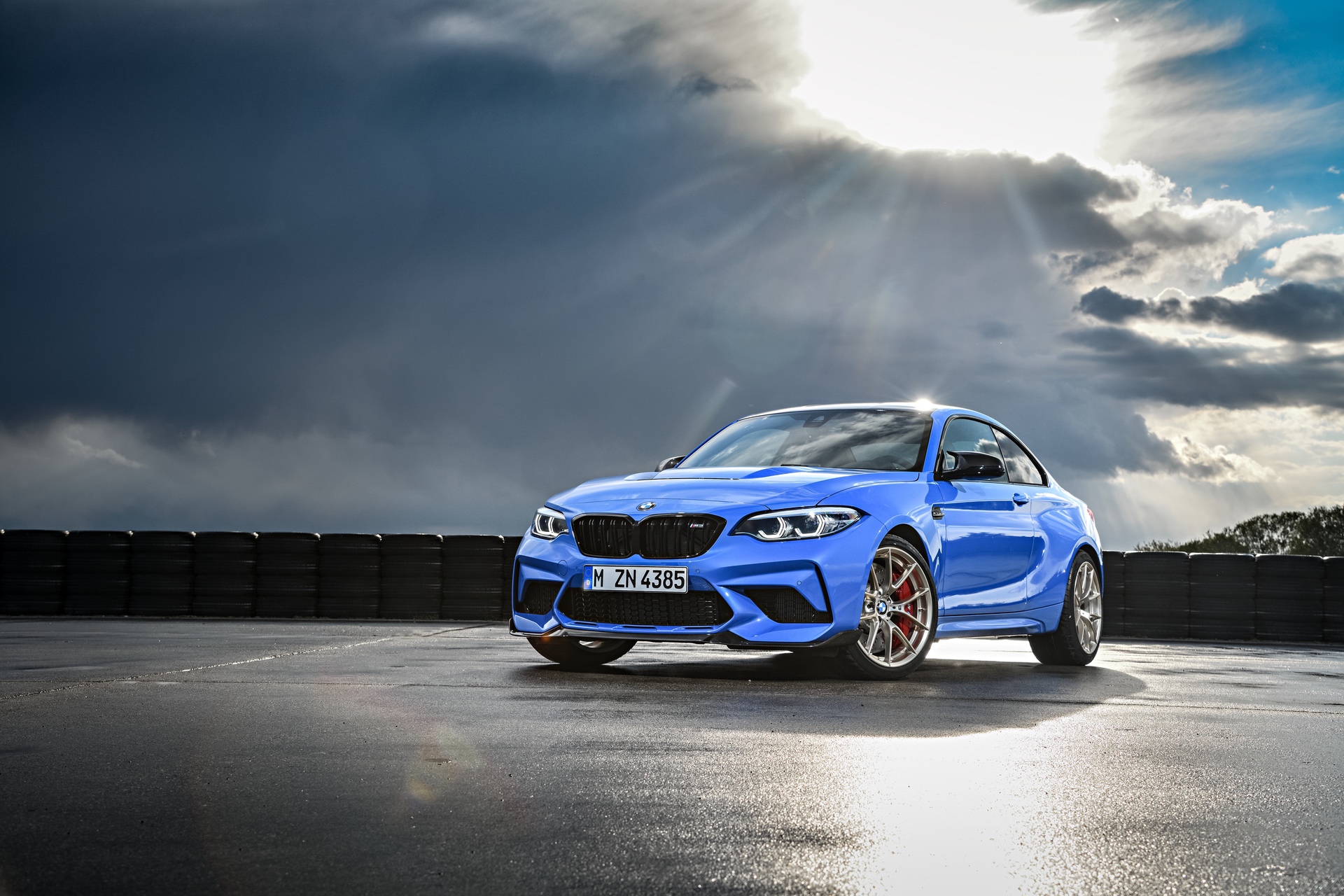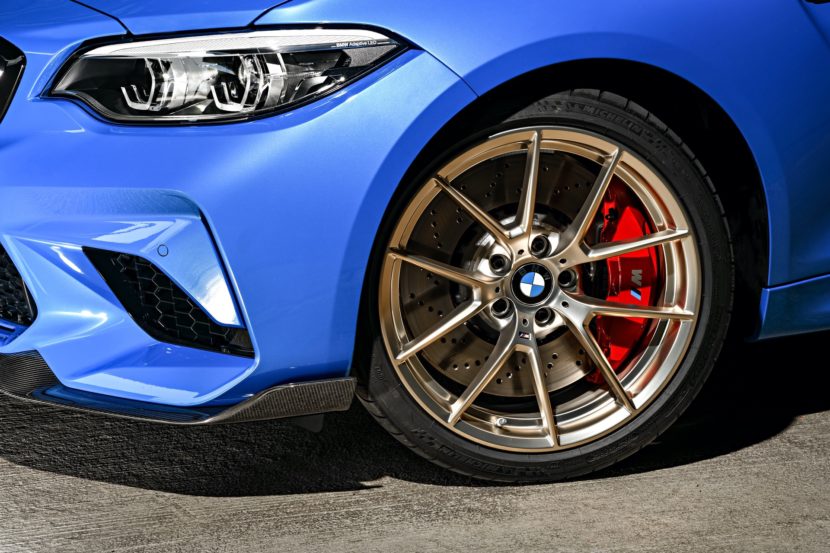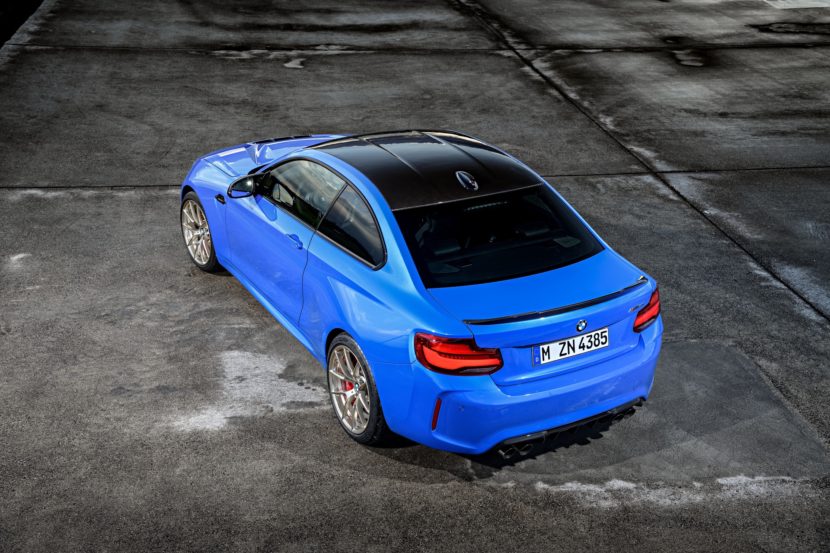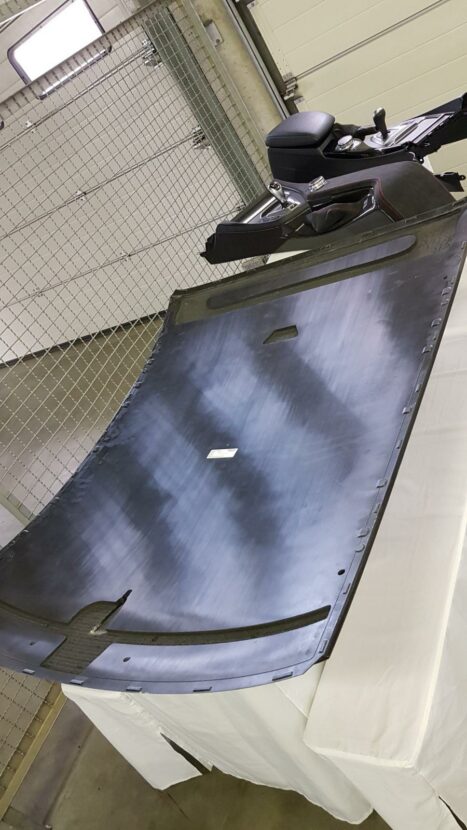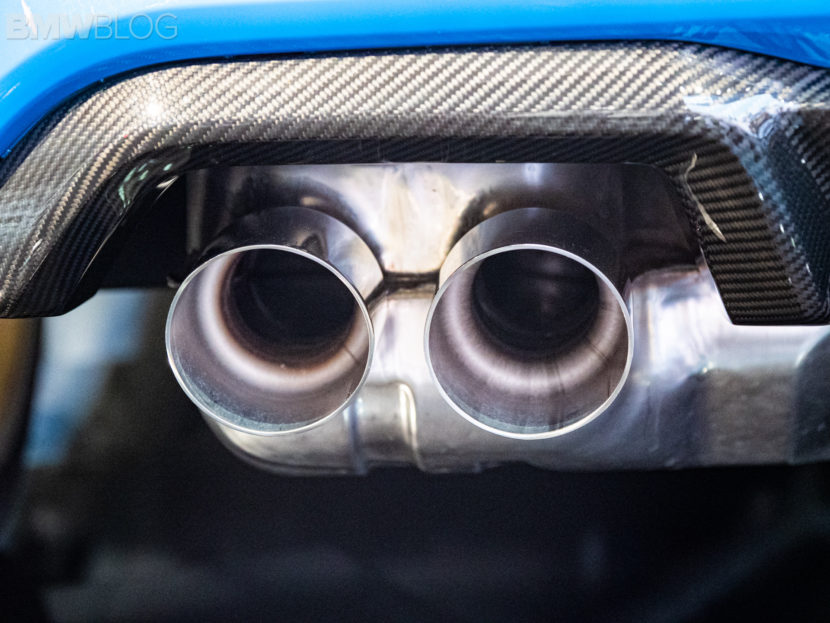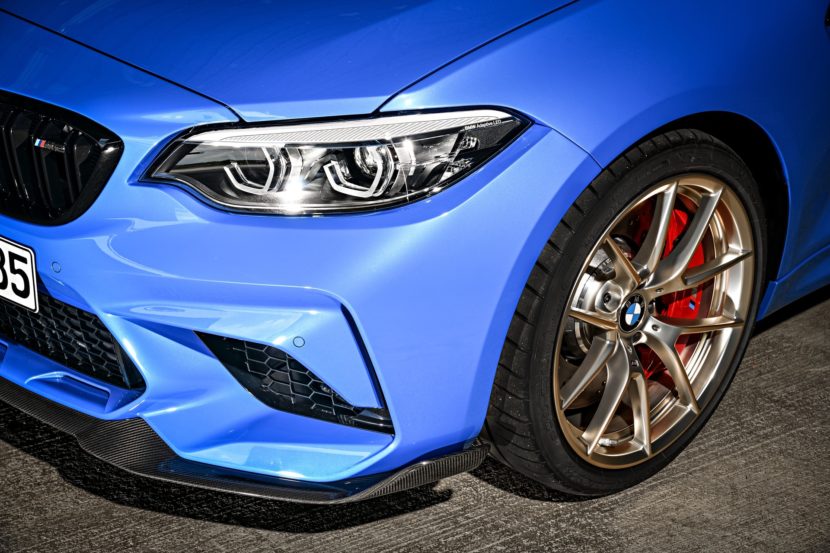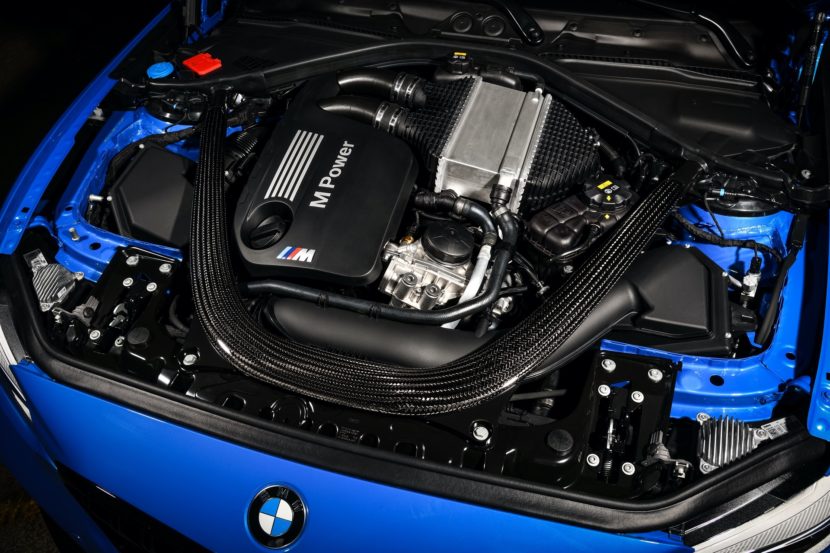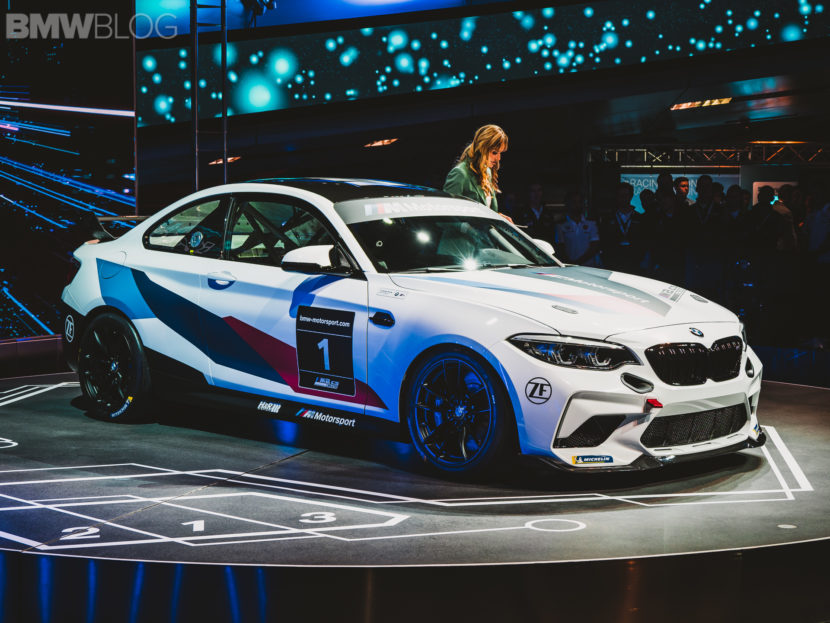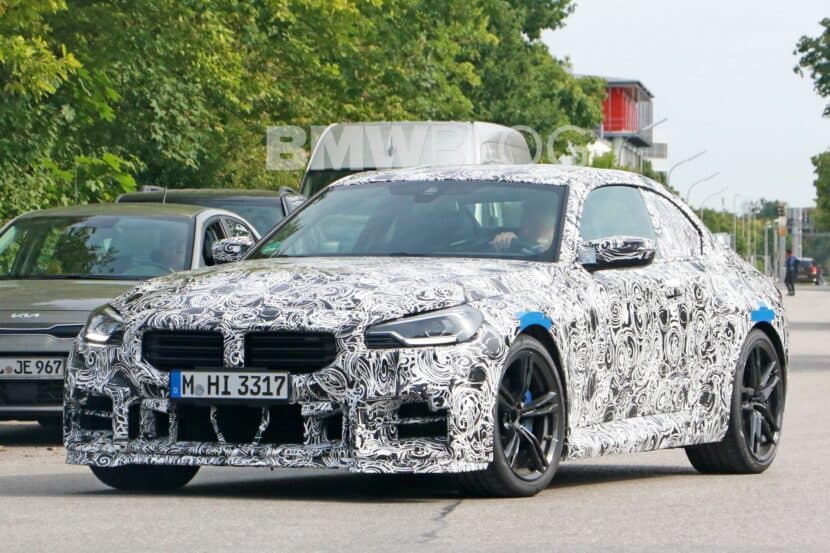The world of the BMW M2 has been one of the great BMW M success stories over the last decennium. Since we saw the first M2 Coupe dressed in Long Beach Blue at the Detroit Motor Show in 2016, many years have passed. With the release of the M2 Competition in 2018 behind us, we are currently looking at the final hoorah in the F87 range, the production limited BMW M2 CS.
With the new model, which is based around the success of the M2 Competition and the M2 Coupe, customers will only be able to choose from a small range of options and four basic colors: Alpine White, Sapphire Black, Misano Blue and Hockenheim Silver.
Powered by the engine as the F82 M4 CS, a more powerful version of the S55 which produces 331 kW (450 PS) and 550 Nm (406 lb-ft), the M2 CS will mark the end of the F87 M2 series in October. This unique moment allowed myself, a previous M2 Coupe and current M2 Competition owner to dive into the deep with Markus Schroeder, the project lead for the M2 series and discuss feedback from the owners, the market and look at a “smurf-blue” CS parked in front of us at the German Sachsenring race track.
Not having the option to drive the car on the road yet, Markus and I (both passionate M2 Competition owners and drivers) found ourselves in a hourly long conversation about the choices made by his team in M Town and explaining the story behind the development of the M2 Competition and CS.
While we discussed numerous in-depth points, personal driving experiences, and the love for our car I felt the need to lift out a few pointers for current and future owners of cars within the M2 lineup and make a top 10 with things you might know about the current Competition and CS models.
- The new Michelin Pilot Sport Cup 2 tire
The world of the Pilot Sport Cup 2 tire is often characteristic by enthusiastic M2 owners as one of not getting the tire to work properly on track. There was clearly room for improvement. This improvement was engineered into a new Cup 2 tire that Michelin developed over the last year and which they released earlier this week to the market.
The tire premiers with the CS and is available for the complete M2 range. It has a harder tire wall to accommodate heavier sports cars and includes Track Connect sensors, which connect to an app in your phone. The new tires are available and should answer all your wishes.
- Unique carbon roof solution on the M2 CS
The carbon roof has been a hot debate in the world of the M2. Enthusiasts placed the unique roof design (commonly used on the M3) at the top of their wish lists as a feature to have. Aftermarket parties offered solutions as soon as the M2 Coupe hit the market in 2016, with M Performance following shortly after.
For the M2 CS, the Germans developed their own unique roof, which is a structural part of the bodywork! This is different from the way aftermarket solutions are available in the market, or even the M Performance solution.
The cross member bar that connects both middle sections of the side arches of the roof is absent on the CS. The roof is fitted from the inside and the rails for the accessory roof rack have been removed. The roof is made of two layers of carbon fiber (featuring a 2 cm weave pattern) pressed together with in the middle a honeycomb structure.
Aerospace technology on a M2! Really nicely done. Weight saving is around 10-10.5 kgs. The stock roof on the M2 and M2C weighs 14.4 kg. This roof is around 4 kgs, which is slightly lighter than the M Performance and aftermarket solutions.
- More weight saving
As mentioned under point 2, the carbon roof saves about 10-10.5 kg, but that is not all. The carbon center tunnel inside the interior saves another 2.5 kgs. The carbon ceramic brake option for the front brakes saves 22 kg over the M Sport kit, which comes with the red calipers on the M2 CS. More weight saving of up to 11 kg is done in the form of the bonnet.
- Exhaust changes
The exhaust on the M2 CS has been changed slightly to accommodate the preferred sound track of the CS over the Competition. The new system has an altered mid damper and larger CS style tailpipes for an enhanced sound volume. Personally, I heard the cars which were outfitted with the European OPF filters blasting around the track and the sound is not that different from the M2C. It is a touch louder.
- Aerodynamics Improvements
On the subject of aerodynamics not much can be said. Though it is vital to share that the new front splitter and rear spoiler offers a considerable amount of additional downforce and also stability at high speed. Markus Schroeder stated that it is vital to fit both at the same time and not to mix the M Performance parts with the CS carbon aero parts.
Each series of parts is developed to be used together, not with other carbon aero parts. Not if you want the best possible outcome of your aerodynamic enhancements.
- Misano Blue as the communication color
The color choice for the M2 CS has been a hot debate among the BMW enthusiastic fan base. With the M2 Coupe having been connected to the Long Beach Blue color, the M2 Competition was dressed in Hockenheim Silver at its release, both unique M colors. The CS however got Misano Blue, a color regularly shown on X1s, X2s and the Z4. Definitely not a M color!
Markus explained to me that the team in M Town looked at all kinds of color options, a common process in the development of a car. They painted cars in orange and red color variants, but never really liked these colors. They did not fit the shape of the car.
It is a bit like Hockenheim Silver not really being as suitable to the M8 Gran Coupe as to the M2C. Internally they referred back to other colors, which the BMW plant in Leipzig had in its pallet of colors. Misano Blue became the final choice as a color that was to their liking.
- Wheel arch extenders
You might have noticed the last few weeks that existing models within the BMW model lineup are being outfitted with plastic strips at the top of the wheel arch. These new wheel arch stripes were introduced because of homologation guidelines.
About 70 countries across the world are introducing new regulations when it comes to noise and road / wheel noise. The regulations state that the tires have to be “within” the arches and therefore the extenders were installed. There is no general guideline across all these countries, but many different ones. The extenders are there to make sure all new guidelines are covered.
- Limited production
As communicated by BMW at the launch of the M2 CS, the production numbers were intended to be 2200, but due to the virus situation it is unknown how many cars will be produced. It will definitely be 2200, but it could well be a larger number depending on demand over the past and coming months.
The plant in Leipzig will built as many as they can. Both the M2 Competition and M2 CS will have their production stop or EOL (end-of-life) in October. European cars are build first so that they have a CoC (Certificate of Conformity) dated before the end of August since the S55 engine is not emission compliant anymore in Europe from September onwards.
- Common issues with the M2 Competition and CS
Owners of the BMW M2 Competition will recognize my words that among the client base there have been some frequent points that have made us return to the workshop for warranty repairs. The replacement of rear lights after indicator failures, the crank hub issue and in some cases the hydraulic lifter thick are things drivers and owners know off quite well.
Of course, I passed these points to Markus and he said that internally they keep a watchful eye on the incoming warranty cases and repairs taking note of them.
The “stone-stuck-between-barrel-and-front-caliper” issue which has damaged a considerable amount of front stock and aftermarket rims so far did not immediately ring a bell. After a closer look at my own car with a light damaged BBS FI R wheel and investigating a CS on site having a much bigger damage on the inside of the rim, we both came to the conclusion there wasn’t really an immediate solution.
The stock 400 mm front discs combined with the 6-pots front calipers of the M Sport and ceramic kits are simply too big to offer enough space between the caliper and the barrel.
My personal solution is fitting a front brake kit with a smaller diameter disc (382 mm), allowing for more space, but not every owner will invest into a new brake solution to deal with the situation.
For other M2 Competition owners with the smaller stock brake kit featuring the blue caliper there are no fears to damage the rims. The space is big enough between both the barrel and caliper.
For M2 CS owners however there isn’t an option other than going aftermarket. If they stay stock, they will suffer rim damage. It is just a matter of time before the rims will scratch on the inside. Surprisingly, this is a recurrence of what happened on the M4 GTS.
- For the tweakers! Which ECU software was altered…
On the software side of things, we are all aware that the engine management was slightly altered. 40 hp was added to the performance and the torque stayed at 550 Nm in comparison to the BMW M2 Competition. Interestingly, the M2C gearbox software was also altered to improve track use, similar to the differential and steering software.
Now let’s see if we can load these changes into M2 Coupes and M2 Competitions improving the drivability of the cars that have lighter wheels and aftermarket suspension coilovers.
M2 CS Racing
Next to the street CS, also the CS Racing was on site. The most noticeable parts on the car that you could potentially add to the road car which is often used on track, were the brake air cooling ducts drilled into the front bumper. Like the carbon door cards, the plastic front splitter and the rear wing, the front bumper can only be acquired via the Motorsport parts list and fitted accordingly upon personal requirement and risk.
Interestingly, the CS racing ran an Alcon 6-pots front brake kit and stock 4-pots M sport rear brakes.
The wonderful day at the Sachsenring really offered an unique opportunity and lovely insight into the engineering and development work that is being done to create the cars we all love so much and cherish. Without having the option to step behind the wheel (that will happen over the coming months), the day offered extremely valued information to understand the current challenges engineers are facing in the automotive market where downsizing, hybrid drivetrains, EVs, noise and emission regulations are breathing down the neck of the teams in M Town.
It also provided an excellent insight into the choices that were made when it comes to for instance the low hanging rear muffler of the M2C and M2 CS exhaust. The cow utter look was required to accommodate rear crash safety (lower positioning) and the new noise and emission regulations (shape of the exhaust system). All logical from an engineering point of view, but not often explained in a 10-page marketing driven press release which we read to know more.
All in all, the day proved to be an excellent example of where the letter M stood for the word Motorsport and to learn more about the engineering behind the machines we pilot every day. Please more of this BMW, it offers us answers, fuels our passion for what we all have so dear in our vehicles and learn more about the hard work that goes into making the driver’s cars which put M smiles on our faces.


